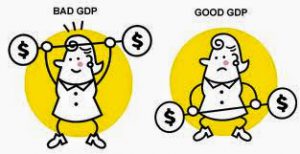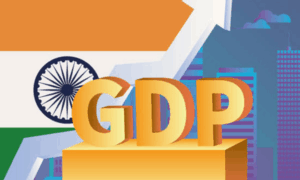
By Matias Vernengo
So everybody hates the Gross Domestic Product! The New York Times and the Financial Times have recently published articles criticizing the main measure of production in the economy. This is certainly not new, and criticism of the value of GDP for certain purposes, as a measure of well-being, for example, have led in the past to the creation of other variables like the United Nations Development Programme’s Human Development Index, which includes GDP per capita (actually Gross National Income per capita), life expectancy at birth and average years of schooling for adults.
In fact, the NYTimes article basis for the supposedly dramatic “Rise and Fall of the GDP” is its inability to measure well-being, and in it, the author emphasizes its disadvantages when compared to the HDI. The NYTimes piece quotes Sen, the godfather of HDI, complaining about the “silliness about identifying growth with development.” Of course, since GDP is only about the material growth of the economy, it would be an incomplete measure of development.
The most common type of critique is that GDP does not count many things, like environmental degradation, or happiness (yep, I know; check Putnam’s ideas in the NYTimes piece; talk about silliness), or almost all non-market transactions for that matter, or is slow to adjust to new products and services introduced in the market, and that it’s not particularly good for understanding inequality (Robert Reich’s complaint in FT’s piece; check the full list of complaints in both articles linked above). The best defense is provided by William Nordhaus, who argues compellingly that: “if you want to know why GDP matters, you can just put yourself back in the 1930 period, where we had no idea what was happening to our economy.”
First, GDP is not a measure of everything, and it certainly has limitations. But it does measure relatively well the material production in a given year, and provides the basis for understanding the process of accumulation, which is central for understanding the dynamics of capitalism. And actually, if you look at functional distribution of income in the
National Income and Product Accounts (NIPA), which are used to calculate GDP, you do have one of the best measures of income inequality! Yes growth of the flow of goods and services produced in a country in a year is not tantamount to development, but without growth developing countries cannot achieve the levels of well-being of advanced economies, so growth is kind of a pre-requiste (and yes, growth involves environmental degradation, and we should try to minimize it). Further, with GDP one can obtain a fairly good measure of productivity (labor productivity), which is the basis for the Wealth of Nations, if you believe that dude Adam Smith.
My beef with the profession is not the use of GDP growth as a measure of material progress, but the fact that a limited, supply-constrained, individual maximizing utility, market-friendly, neoclassical version of the process of growth and development is the dominant one. But GDP is fine. Like price indexes, which also are limited and sometimes inaccurate, is an essential tool for understanding the real world.
Matias Vernengo is Professor of Economics, Bucknell University, USA. This write-up was originally published on his blogroll -NAKED KEYNESIANISM. For more detail please Click Here.



















